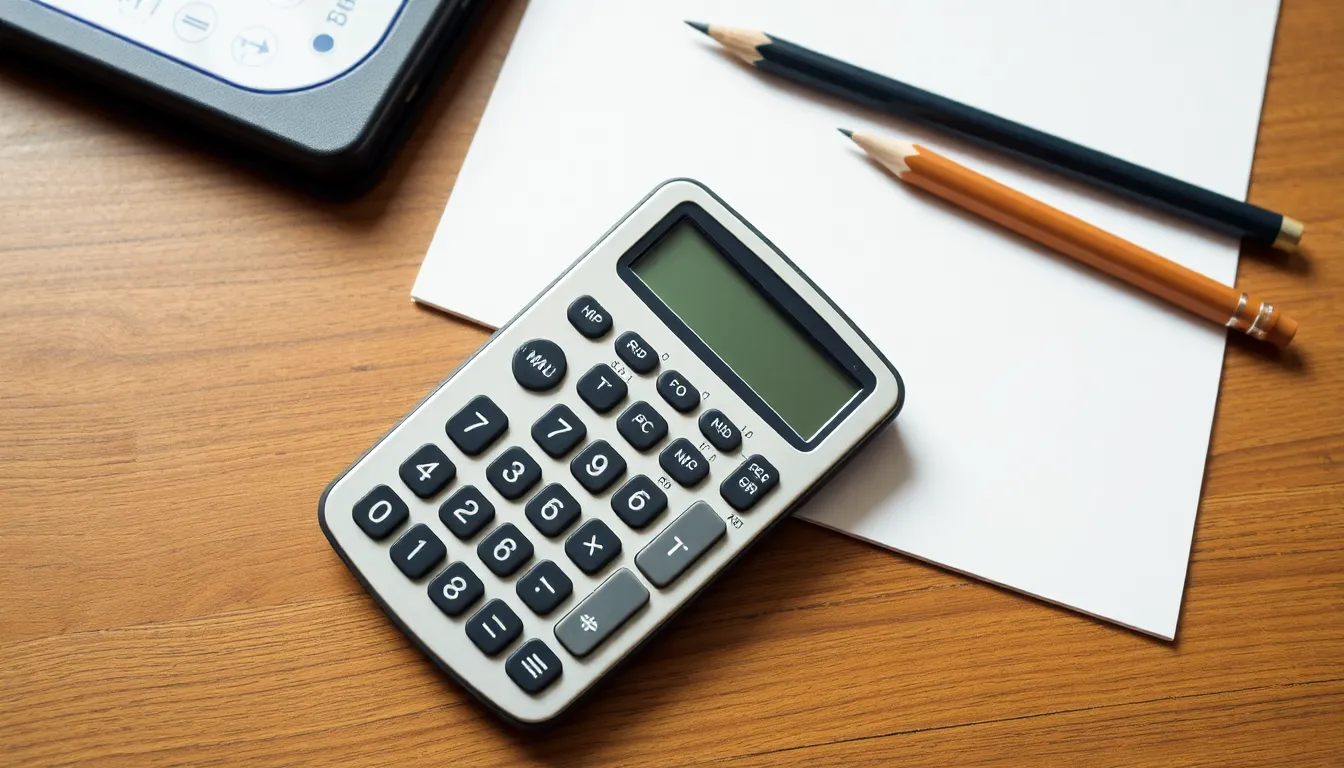Ever found yourself scratching your head over a simple math question? You’re not alone! When it comes to figuring out what 20% of 65 is, many people feel like they’re suddenly back in high school, staring at an algebraic monster. But fear not! This isn’t a math exam, and there’s no need for a calculator showdown.
Table of Contents
ToggleUnderstanding Percentages
Calculating percentages often feels daunting, yet understanding them simplifies various real-life situations.
What Are Percentages?
Percentages represent a portion of 100. They illustrate how much one quantity relates to another. For example, 20% signifies 20 out of every 100 units. This concept facilitates comparison, helping individuals analyze data effectively. In finance, percentages express interest rates or discounts. In statistics, they convey probabilities or survey results. Understanding percentages enables individuals to make informed decisions based on relative sizes.
Why Are Percentages Important?
Percentages play a crucial role in many aspects of daily life. They enhance comprehension of financial documents and decisions. Individuals use percentages to determine sales tax, calculate tips, or assess investment returns. Educational applications include grading systems where percentages indicate performance levels. Marketing strategies often utilize percentages to highlight discounts or promotions, which attract customers. Overall, percentages provide a clear framework for evaluating and comparing different scenarios.
Calculating 20% of 65

Calculating 20% of 65 involves straightforward steps. First, convert the percentage to a decimal by dividing 20 by 100, which equals 0.2. Next, multiply 0.2 by 65 to find the result. Thus, 0.2 times 65 equals 13. The final answer shows that 20% of 65 is 13.
Step-by-Step Calculation
This calculation can easily be broken down into simple steps. First, convert the percentage to a decimal. Dividing 20 by 100 results in 0.2. After that, multiply 0.2 by 65. Multiplying gives 13, confirming that 20% of 65 is 13.
Alternative Methods to Calculate
Exploring alternative methods makes the calculation versatile. One way involves using ratios. Setting up a ratio shows that 20% equals 20 out of 100, or 1 out of 5. Knowing that, dividing 65 by 5 provides 13 directly. Another method uses a calculator for quick results. Inputting 65, multiplying by 0.2, and getting 13 ensures accuracy and efficiency.
Real-Life Applications of 20% of 65
Understanding what 20% of 65 means enhances comprehension in various contexts. Exploring its applications helps illuminate practical uses of percentage calculations.
Financial Examples
In finance, calculating 20% of 65 often applies when assessing a discount. A $65 item with a 20% discount costs $52 after subtracting the $13 savings. Interest rates commonly use percentages too. For instance, in a savings account, earning 20% interest on a $65 deposit results in gaining $13. Working with taxes also showcases this calculation. If the tax rate is 20%, calculating 20% of a $65 purchase signifies an additional $13 expense.
Everyday Scenarios
In everyday life, 20% of 65 comes into play in many situations. When splitting a $65 bill among five friends, each person pays $13. Planning a party might involve budgeting for 20% of total expenses. For example, if the budget hits $65, allocating 20% covers essentials like decorations with $13. Weight management can also incorporate this percentage. Tracking a weight loss goal of 65 pounds, losing 20% means aiming for a 13-pound reduction to reach health targets.
Common Misconceptions About Percentages
Many individuals mistakenly believe that calculating percentages requires advanced math skills. In reality, basic arithmetic often suffices for these calculations. Another prevalent misconception revolves around the idea that percentages only apply to whole numbers. Percentages actually relate to any quantity, including fractions or decimals.
Some also think that every percentage can be easily translated into a direct monetary value without context. Understanding that percentages depend on the total amount is essential for accurate calculations. For example, knowing what 20% means when calculating 20% of 65 is critical for making informed financial decisions.
Several people confuse percentages with fractions and ratios. While they share similarities, percentages specifically express a part out of 100. This distinction matters when analyzing data in finance or statistics. An additional misconception involves the belief that percentages are universally applicable. Different contexts may alter their significance, such as comparing discount rates versus interest rates.
Another misunderstanding occurs when individuals fail to realize that percentages can increase or decrease based on the underlying amount. Knowing that 20% of 65 results in 13 helps clarify situations in finance where percentages affect budgeting or savings. Grasping these principles allows clearer communication and understanding in various real-life scenarios.
In finance, some may assume calculating percentages is unnecessary. Perceiving percentages as cumbersome can hinder one’s ability to make sound decisions. Overall, clarifying these common misconceptions can empower individuals in effective percentage utilization throughout daily life.
Understanding how to calculate 20% of 65 is more than just a math exercise; it’s a valuable skill that can simplify everyday decisions. Whether it’s budgeting, shopping, or evaluating performance, grasping percentages allows individuals to make informed choices.
The straightforward calculation of 20% of 65 resulting in 13 serves as a practical example of how percentages function in real life. With various methods available for calculating percentages, anyone can confidently tackle similar problems.
By embracing the concept of percentages, individuals can enhance their financial literacy and navigate daily challenges with ease.





